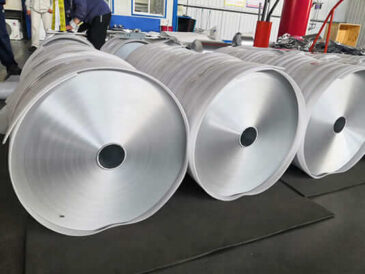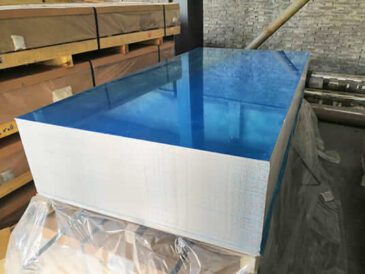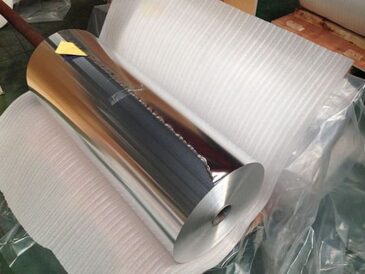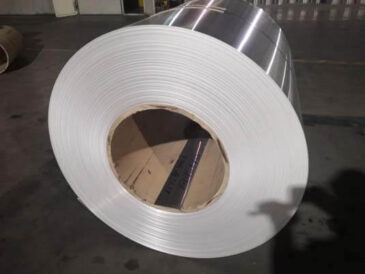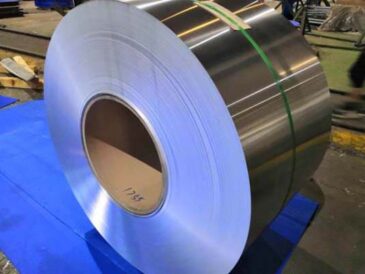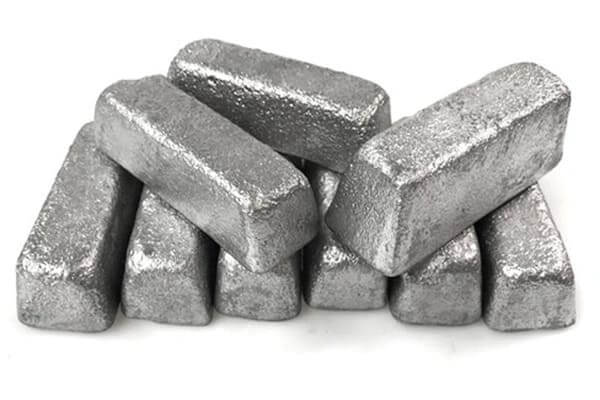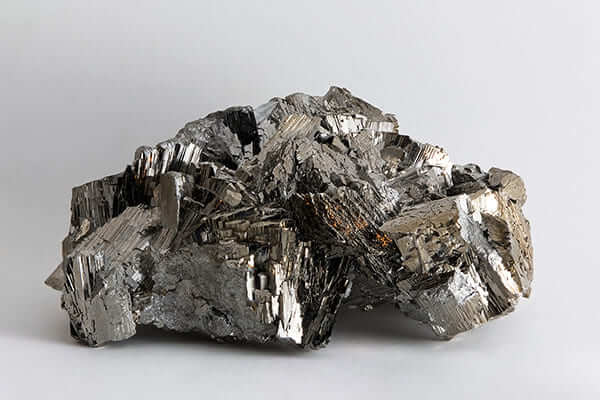What is 5083 aluminium sheet plate?
5083 aluminium sheet plate belongs to the 5000 series Al-Mg-Si alloy and is used in a wide range of applications, especially in the construction industry. It is a promising alloy. It has good corrosion resistance, excellent weldability, good cold workability, and has medium strength.
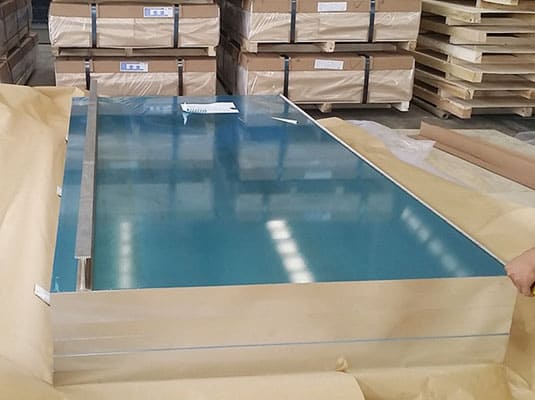
5083 aluminium sheet plate
The main alloying element of 5083 is magnesium, which has good formability, corrosion resistance, weldability, and medium strength. It is used to manufacture aircraft fuel tanks, oil pipes, and sheet metal parts of transportation vehicles and ships, instruments, street lamp brackets and rivets, Hardware products, electrical casings, etc.
Aluminum material has excellent processability and light weight, which is in line with the development trend of lightweight automobiles and is very popular in the field of vehicle manufacturing. The truck compartment is generally made of 5083 aluminium sheet plate, the main alloy element is magnesium, which has good formability, corrosion resistance, weldability, and medium strength, and is widely used in sheet metal parts of transportation vehicles and ships.

Pressure vessel
H321 temper is the most common in Huawei’s range of products. 5083 is available in both rolled sheet and rolled plate.
5083 aluminum sheet plate has the highest strength of the non-heat treatable alloys, but is not recommended for use at temperatures above 65°C.
Chemical Composition of 5083 Aluminium Sheet Plate
| ELEMENTS | Mg | Si | Iron | Ti | Cu | Mn | Cr | Zn | Others Total | Alu |
| CONTENT (WT%) | 4.0-4.9 | ≤0.4 | 0.4 | ≤0.15 | ≤0.1 | 0.4-1.0 | 0.05-0.25 | 0.25 | 0.15 | Remain |
Mechanical Properties and Tempers of 5083 Aluminium Sheet
| Typical Temper | Tensile Strength(KSI) | Yield Strength(KSI) | Elongation(%) | Thickness(mm) | Width(mm) | Length(mm) |
| O(annealed) | 42 | 21 | 14 | 0.2-350 | 500-3100 | Max1600 |
| H122 | 43 | 23 | 10 | |||
| H116 | 46 | 33 | 10 | |||
| H321 | 48 | 33 | 10 |
Specifications and applications of 5083 aluminium sheet plate
| Alloy | Temper | Thickness (mm) | Width (mm) | Application |
| 5083 | O/H111/H112/H116/H321 | 3-10 | ≤2600 | shipbuilding |
| 5083 | O/H111/H112/H116/H321 | 10-50 | ≤3600 | Marine, ship |
| 5083 | O, H111 | 3–10 | ≤2600 | tanker |
| 5083 | O, H12, H14, H16, H18, H19, H22,
H24, H26, H28, H32, H34, H36, H38, H111, H112, H114, H116, H321
|
0.5-500 | 20-2650 | LNG storage tanks, gas storage cylinders, GIS shells, car body skins, flange materials, etc. |
5083 aluminium sheet plate Properties
| Alloy and Temper | Thickness mm | Tensile Strength | Elongation (% min in 50mm) | ||||
| Over | Up to | Ultimate | Yield | ||||
| Min | Max | Min | Max | ||||
| 5083-0 | 1.2 | 40 | 275 | 350 | 125 | 200 | 16 |
| 5083-H112 | 6.3 | 40 | 275 | – | 125 | – | 10-12 |
| 5083-H32 | 3.2 | 40 | 305 | 385 | 215 | – | 10-12 |
| 5083-H321 | 3 | 40 | 305 | 385 | 215 | 295 | 10 |
| 5083-H116 | 3 | 40 | 305 | – | 215 | – | 10 |
| 5383-H321 | 3 | 50 | 305 | 380 | 220 | – | 10 |
| 5383-H116 | 3 | 50 | 305 | – | 220 | – | 10 |
| 5383-H116 | 3 | 50 | 305 | – | 220 | – | 10 |
| Mechanical Property Specification – Single values are maxima except as noted | |||||||
Bend radii
Recommended Minimum Bend Radii for 90-Degree Cold Forming of Sheet of 5083 (Reference test method – ASTM E290) Thickness (t)
| Temper | 1.6mm | 3.2mm | 4.8mm | 6mm | 10mm | 12mm |
| O | ½t | 1t | 1t | 1t | 1½t | 1½t |
| H32 | 1t | 1½t | 1½t | 1½t | 2t | 2½t |
| H321 | 1t | 1½t | 1½t | 1½t | 2t | 2½t |
| H116 | N/A | N/A | N/A | N/A | N/A | N/A |
|
Bend radii listed are minimum recommendations only for bending plates without fracture. Application method based on cold forming in a standard press brake with air bend dies. Alternative types of bending operations may require larger radii or smaller radii. Tooling quality and design may vary radii outcomes. |
||||||
Advantages of 5083 aluminium sheet plate
- 1. Low density and high strength, specially used for marine aluminum plates, lightweight automobile aluminum plates, and tanker aluminum plates;
- 2. The 5083 medium-thick aluminum plate is corrosion-resistant, durable, economical and environmentally friendly;
- 3. During the production of 5083 aluminum sheet plates, Huawei Aluminum added a small amount of Be to reduce the crack tendency of ingots and improve the surface quality of rolled sheets.
- 4. Classification society factory approval certificate** high-quality ship plate escort;
- 5. There are no oil spots, no waves, no scratches, no roll marks on the surface of the aluminum plate, neat trimmed edges, and no burrs.
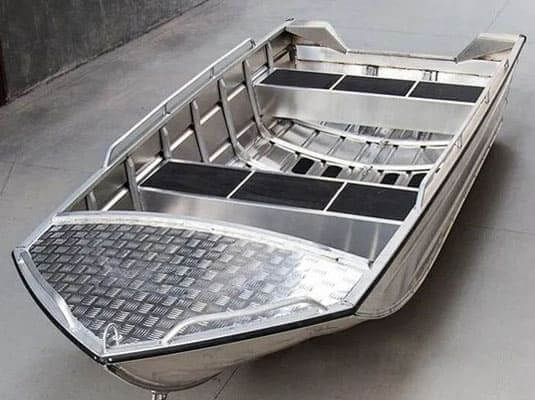
5083 aluminium sheet plate for boat
What can we supply
5083 aluminium sheet plate, 5083 hot roll aluminum plate, 5083 medium-thick aluminum plate, 5083 marine aluminum plate, 5083 patterned aluminum plate, etc., can be customized on demand.
5083 aluminium sheet plate is used in ships: 5083H116/H321/H112 is commonly used, and the marine aluminum sheet of ** Aluminum has been successfully used on yachts, cruise ships and other hulls;
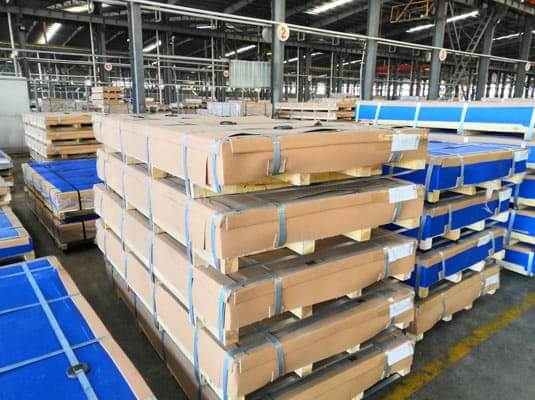
5083 aluminium sheet plate in stock
5083 aluminium sheet plate is used for vehicles: aluminum alloy tank car body/tank body, automobile fuel tank, gas storage tank, bus skin, C82 coal truck, automobile roof/bottom guard plate, etc. cooperate.
Typical uses of 5083 medium-thick aluminum plate/extra-wide 5083 aluminium sheet plate: molds, LNG storage tanks, flange materials, GIS high-voltage switch housings, precision machining, etc.;
Huawei aluminum 5083 aluminium sheet has successively won 5 certificates from China Classification Society (CCS), Norwegian Classification Society (DNV), American Classification Society (ABS), French Classification Society (BV), British Classification Society (LR) Classification society.
Aluminum plate alloy packaging and delivery
- 1. Carry out paper clipping or film coating on the aluminum plate to ensure that the surface of the aluminum plate is intact without scratches;
- 2. Plastic or kraft paper packaging is used to prevent moisture and rain, ensuring that the aluminum plates are clean and free of dirt during transportation (each package has a moisture-proof desiccant to ensure the product quality of our products in East and South China, where there is more rain);
- 3. Install wooden pallets and reinforce them with steel belts to avoid collisions during transportation and ensure that the geometric shape of the aluminum plates remains unchanged;
- 4. Export products are packed in wooden boxes and brackets with fumigation marks;
- 5. Pack according to other packaging requirements of customers;
Casting production process and its introduction
The purpose of melting and casting is to produce alloys with satisfactory composition and high purity of melt, so as to create favorable conditions for casting alloys of various shapes.
Melting and casting process steps: batching --- feeding --- melting --- stirring after melting, slag removal --- pre-analysis sampling --- adding alloy to adjust the composition, stirring --- refining --- static Setting——Guide furnace casting.
Hot rolling production process and its introduction
- 1. Hot rolling generally refers to rolling above the metal recrystallization temperature;
- 2. During the hot rolling process, the metal has both hardening and softening processes. Due to the influence of deformation speed, as long as the recovery and recrystallization process is too late, there will be a certain work hardening;
- 3. The recrystallization of the metal after hot rolling is incomplete, that is, the coexistence of recrystallized structure and deformed structure;
- 4. Hot rolling can improve the processing performance of metals and alloys, reduce or eliminate casting defects.
- 1. The casting and rolling temperature is generally between 680°C and 700°C. The lower the better, the stable casting and rolling line usually stops once a month or more to re-stand. During the production process, it is necessary to strictly control the liquid level of the front tank to prevent low liquid level;
- 2. Lubrication uses C powder with incomplete combustion of gas for lubrication, which is also one of the reasons for the dirty surface of casting and rolling materials;
- 3. The production speed is generally between 1.5m/min-2.5m/min;
- 4. The surface quality of products produced by casting and rolling is generally relatively low, and generally cannot meet products with special physical and chemical performance requirements.
- 1. Cold rolling refers to the rolling production method below the recrystallization temperature;
- 2. There will be no dynamic recrystallization during the rolling process, and the temperature will rise to the recovery temperature at most, and the cold rolling will appear in a work hardening state, and the work hardening rate will be large;
- 3. The cold-rolled sheet and strip have high dimensional accuracy, good surface quality, uniform structure and performance, and products in various states can be obtained with heat treatment;
- 4. Cold rolling can roll out thin strips, but at the same time, it has the disadvantages of high energy consumption for deformation and many processing passes.
- 1. Finishing is a processing method to make the cold-rolled sheet meet the customer's requirements, or to facilitate the subsequent processing of the product;
- 2. The finishing equipment can correct the defects produced in the hot rolling and cold rolling production process, such as cracked edge, oily, poor plate shape, residual stress, etc. It needs to ensure that no other defects are brought into the production process;
- 3. There are various finishing equipments, mainly including cross-cutting, slitting, stretching and straightening, annealing furnace, slitter, etc.
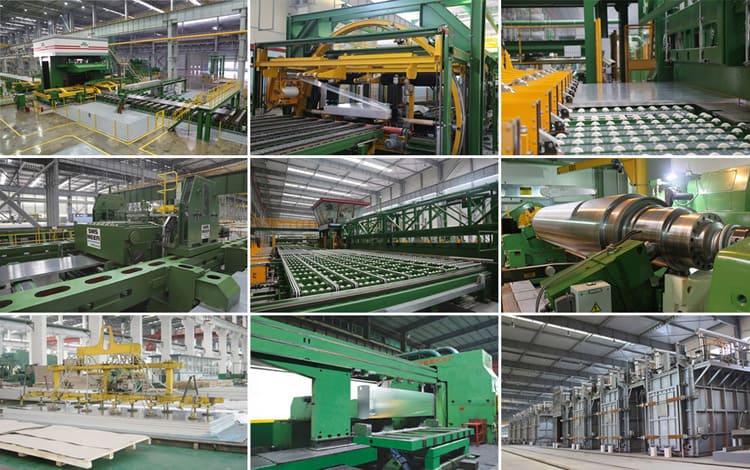
Casting and rolling process
Casting and rolling process: liquid metal, front box (liquid level control), casting and rolling machine (lubrication system, cooling water), shearing machine, coiling machine.
Cold rolling production process

Introduction to finishing production process
Aluminum alloy has the characteristics of low density, good mechanical properties, good processing performance, non-toxic, easy to recycle, excellent electrical conductivity, heat transfer and corrosion resistance, so it has a wide range of applications.
Aerospace: used to make aircraft skins, fuselage frames, girders, rotors, propellers, fuel tanks, wall panels and landing gear struts, as well as rocket forging rings, spacecraft wall panels, etc.
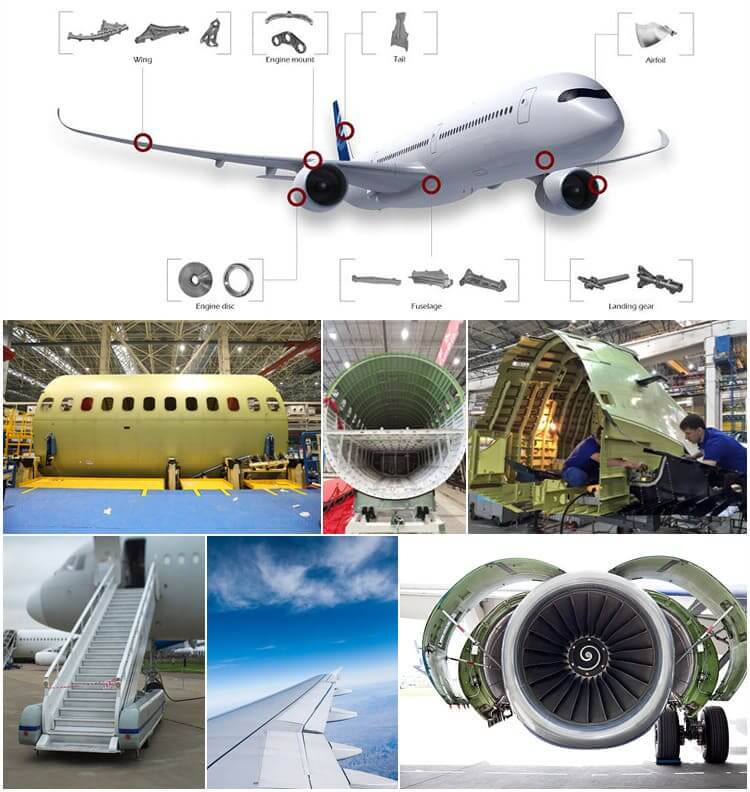
Aluminum alloy used for aerospace
Transportation: used for car body structure materials of automobiles, subway vehicles, railway passenger cars, high-speed passenger cars, doors and windows, shelves, automotive engine parts, air conditioners, radiators, body panels, wheels and ship materials.
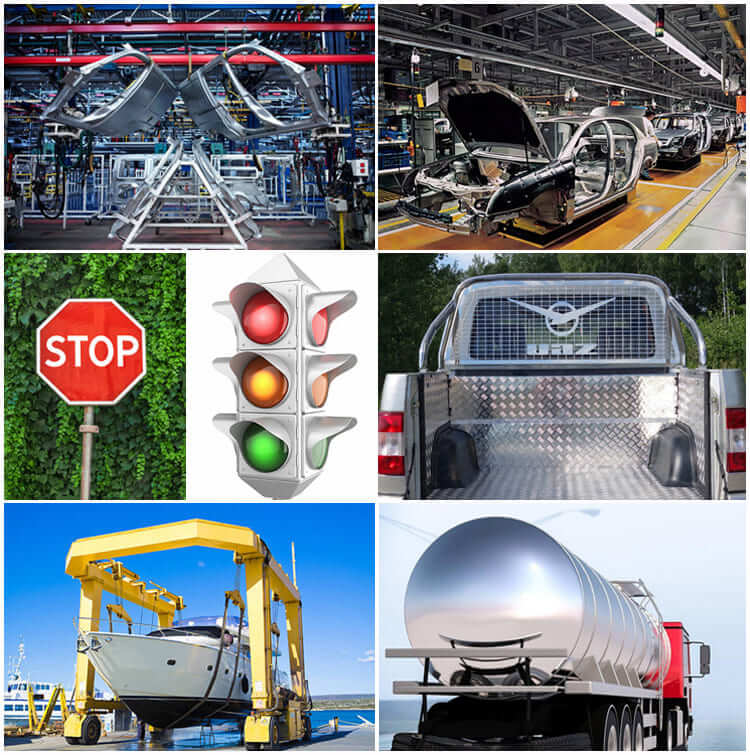
Traffic application
Packaging: All-aluminum pop cans are mainly used as metal packaging materials in the form of thin plates and foils, and are made into cans, lids, bottles, barrels, and packaging foils. Widely used in the packaging of beverages, food, cosmetics, medicines, cigarettes, industrial products, medicines, etc.
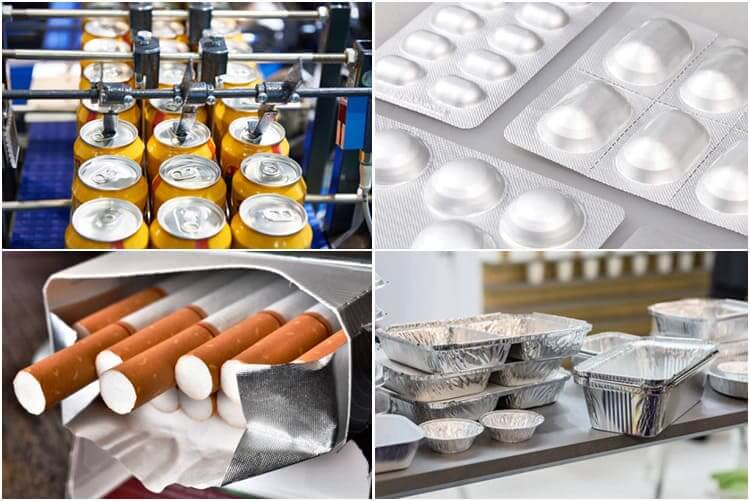
Packaging application
Printing: Mainly used to make PS plates, aluminum-based PS plates are a new type of material in the printing industry, used for automatic plate making and printing.

PS printing
Architectural decoration: aluminum alloy is widely used in building structures, doors and windows, suspended ceilings, decorative surfaces, etc. due to its good corrosion resistance, sufficient strength, excellent process performance and welding performance.
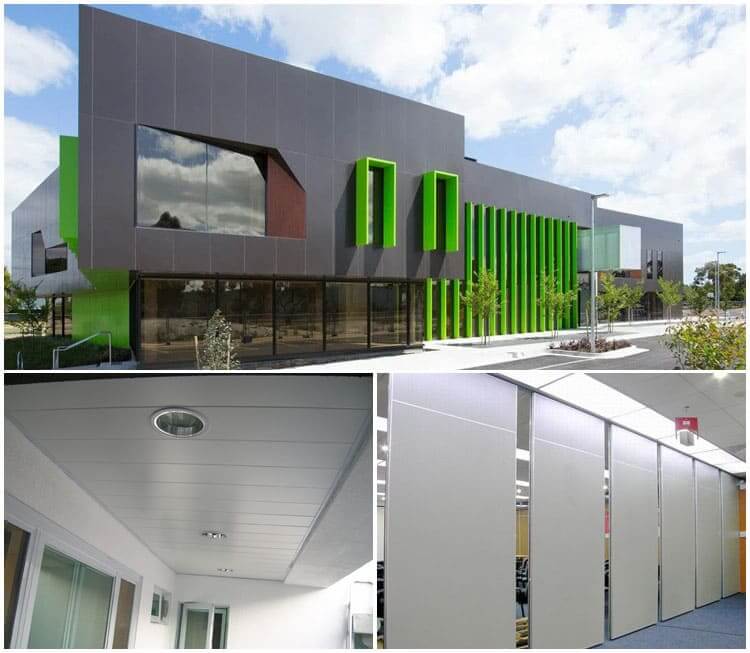
Aluminum alloy construction application
Electronic products: computers, mobile phones, refrigerator shells, radiators, etc.

Electronic product application
Kitchen supplies: aluminum pots, aluminum basins, rice cooker liners, household aluminum foil, etc.

Kitchen application
Packaging Of Aluminum Sheet/Coil
Every detail of packaging is where we pursue perfect service. Our packaging process as a whole is as follows:
Lamination: clear film, blue film, micro-mucosal, high-mucosal, laser cutting film (2 brands, Novacell and Polyphem);
Protection: paper corner protectors, anti-pressure pads;
drying: desiccant;
Tray: fumigated harmless wooden tray, reusable iron tray;
Packing: Tic-tac-toe steel belt, or PVC packing belt;
Material Quality: Completely free from defects such as white rust, oil spots, rolling marks, edge damage, bends, dents, holes, break lines, scratches, etc., no coil set.
Port: Qingdao or other ports in China.
Lead time: 15-45 days.

Aluminum sheet/plate packaging process
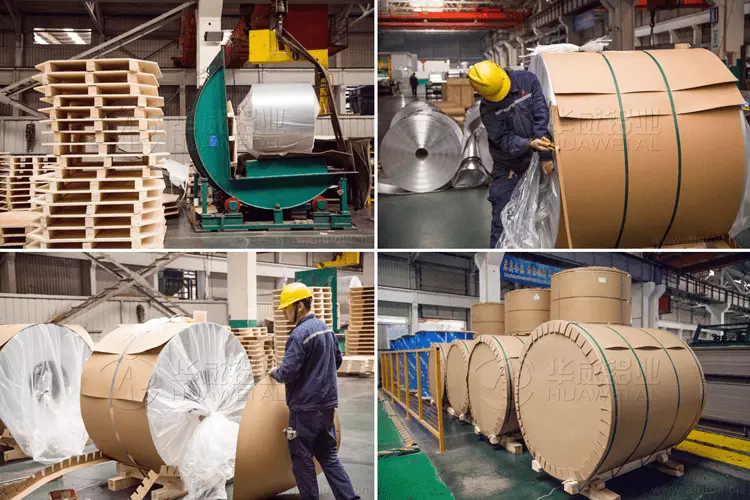
Aluminum coil packaging process
F: Are you a manufacturer or a trader?
Q: We are a manufacturer, our factory is at No.3 Weier Road, Industrial Zone, Gongyi, Henan, China.
F: What is the MOQ for ordering the product?
Q: Our MOQ is 5 tons, and some special products will have a minimum order quantity of 1 or 2 tons.
F: How long is your lead time?
Q: Generally our lead time is about 30 days.
F: Do your products have quality assurance?
Q: Yes, if there is a quality problem with our products, we will compensate the customer until they are satisfied.
Related Products
Latest Blogs
Aluminum foil vs tin foil
Aluminum foil and tin foil are two common metal sheet materials. They are similar in appearance, both have a silver-white metallic luster, and are often used in daily life to wrap food, perform baking or grilling and other cooking operations.
7075 t651 aluminum material properties
7075 aluminum alloy is a high-strength aluminum alloy. It belongs to the Al-Zn-Mg-Cu alloy series and is a representative product of the 7000 series aluminum alloy.
Physical and Chemical Properties of Aluminum and aluminum alloys
Although aluminum and aluminum alloys both use aluminum as the main synthetic element, they have great differences in certain physical and chemical properties.
The development history of aluminum and aluminum alloys
Aluminum is named after the Latin word "alumen", which means "bitter earth" or "alum". The name was first proposed by Swedish chemist Jons Jakob Berzelius around 1825 to describe the properties of this metal oxide.



